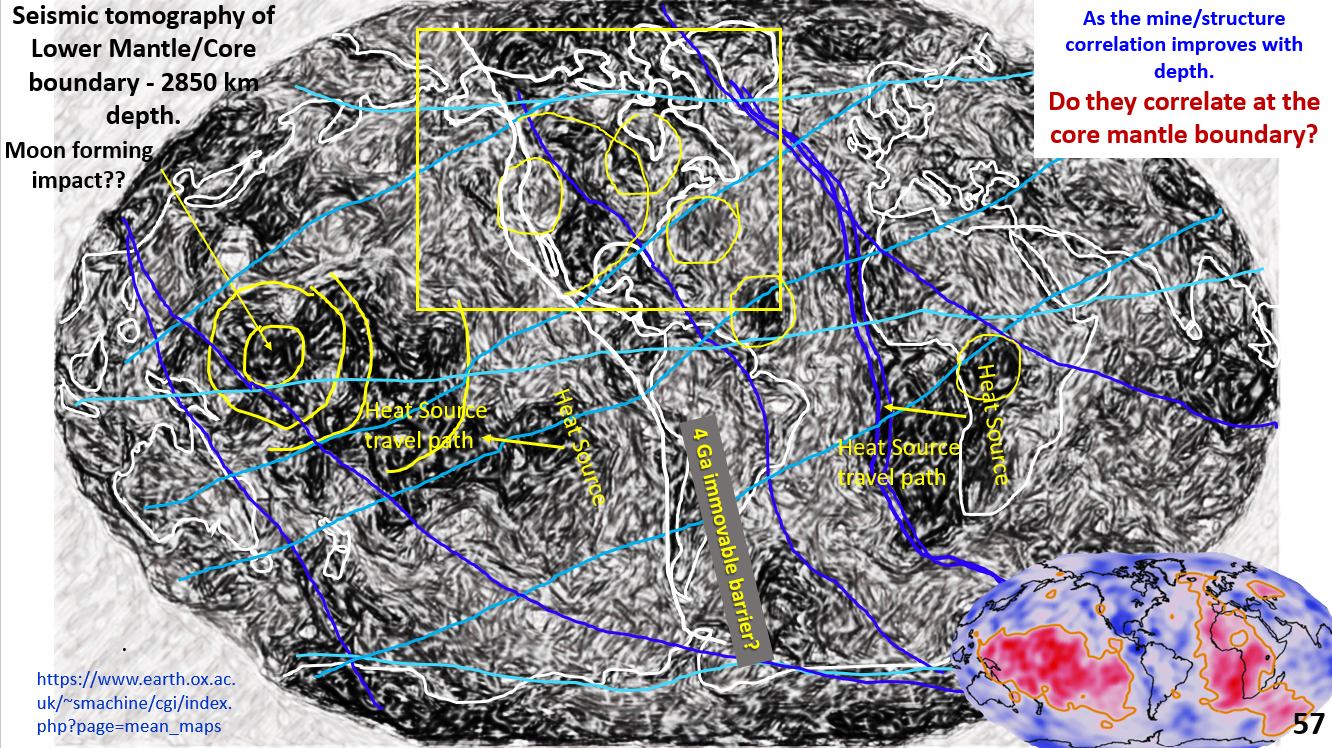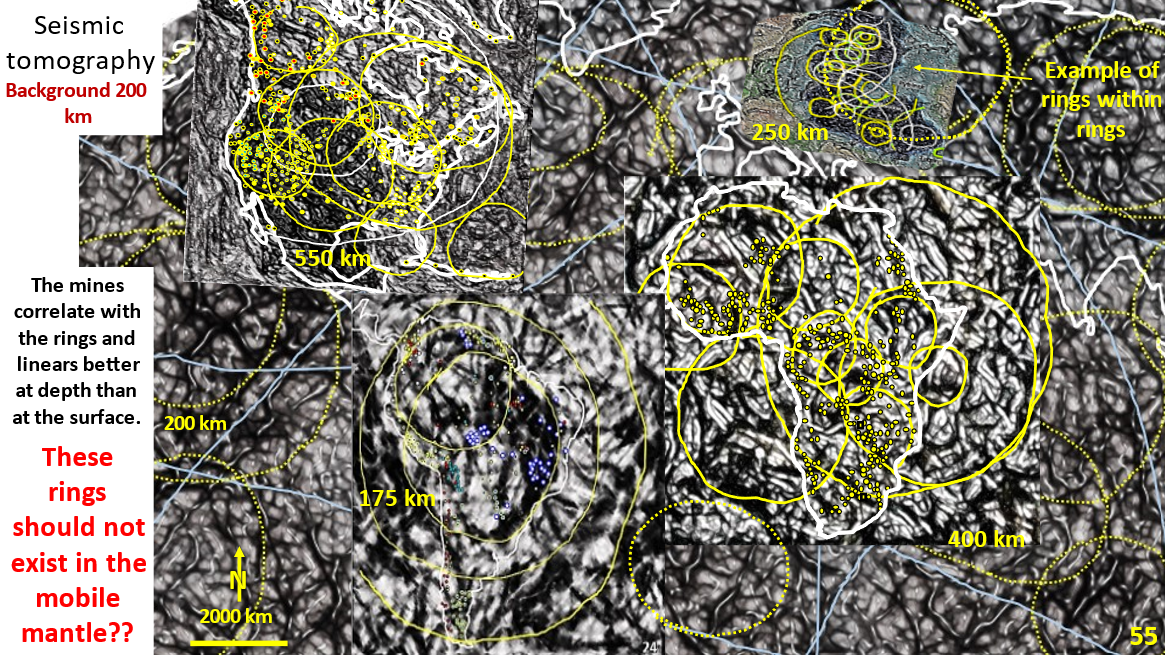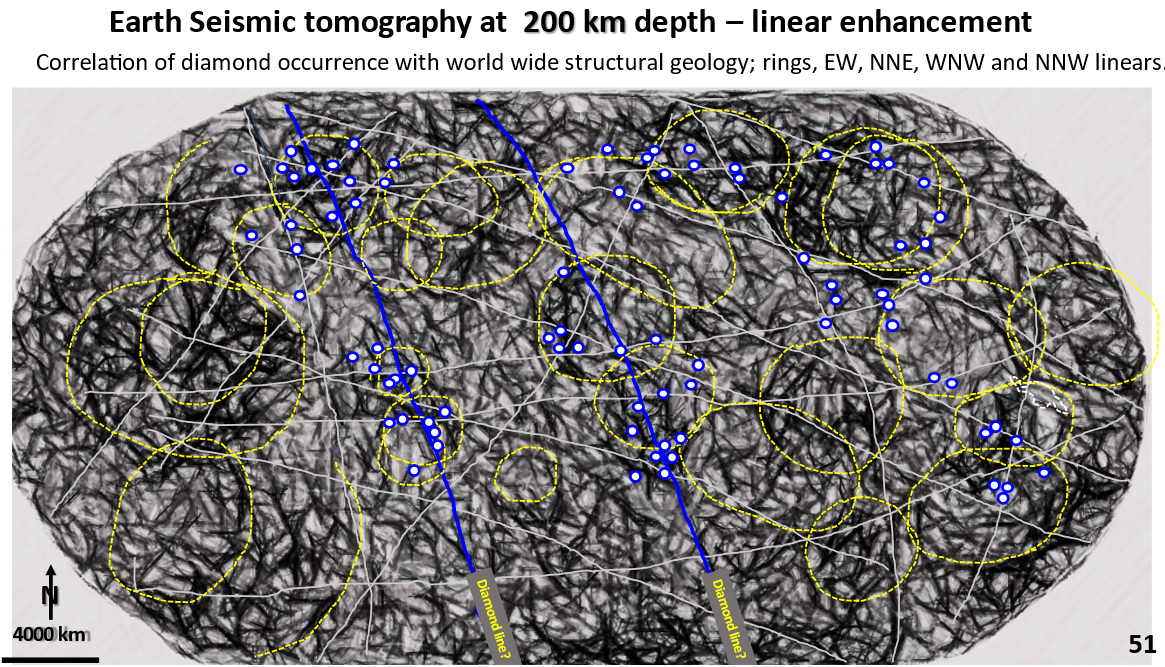Earth Seismic tomography at 2,850 km depth at the outer core/mantle boundary. AusIMM Webinar Part12.
Tracing the surface structures right down to the Core Mantle Boundary (CMB) is a new area of my research (you see it first here!), . This is the first time that ultra-detailed structural geology of deep Earth has been used in constructing a model of Earth’s evolution down to the Core Mantle Boundary.
RESULT? The seismic tomography of the Core Mantle Boundary shows linear and ring structures that relate to those on the surface and on the 200 km depth tomography. How can structures 2,850 km deep propagate to the surface??
The fact that the same structural features are in the same geographic relationship to the continents above suggests that overall there has been little movement of the surface of Earth with respect to the CMB. How can this occur??
By what mechanism can the earth above the CMB be immovable when the plates at the surface move?
POSSIBLE MECHANISM. Erosion removes the pop-up mountains and the reverse spinning 5,000 C semi-liquid outer core would slice off the pop-down material like a laser cutter! This relieves the plate movement pressure and enables the continents to remain relatively static and still enable the observed plate movement.
if the mines do lie on the structures on the Core Mantle Boundary this will support this hypothesis of the hot mineralising fluids originating at the CMB.
MINERALISATION. The mechanism for deep-seated mineralisation would be super heated fluids from the core scavenging metals either from the core as they ascend and depositing them further up. It makes a lot of sense to me!



